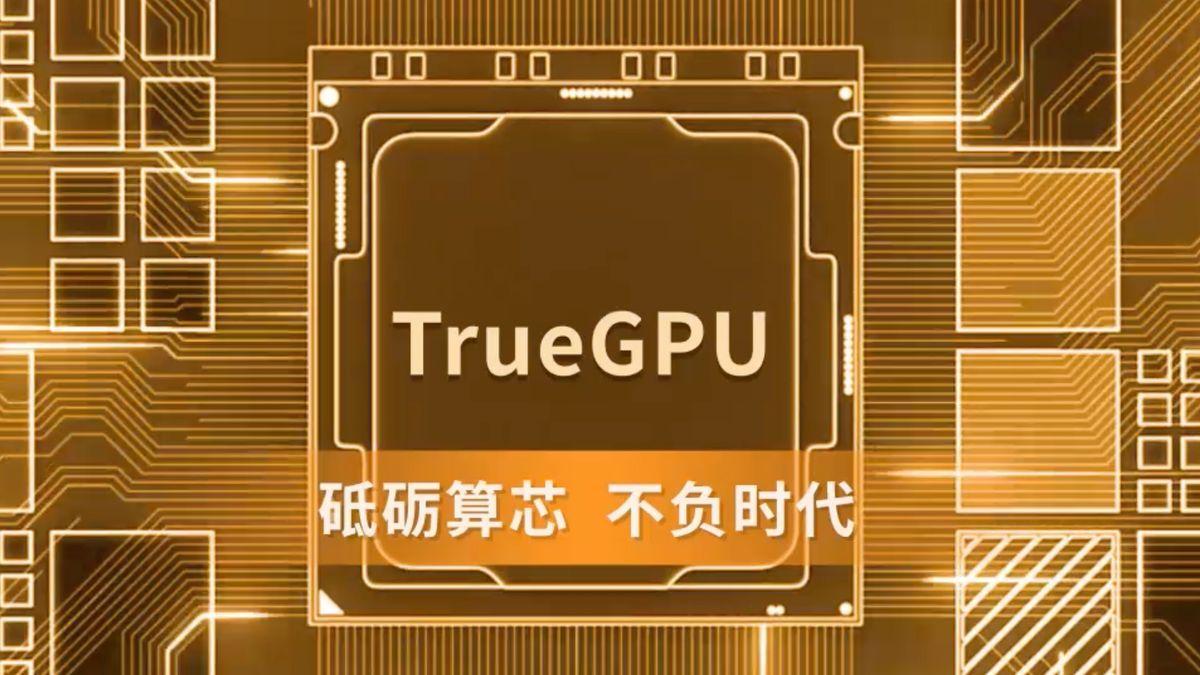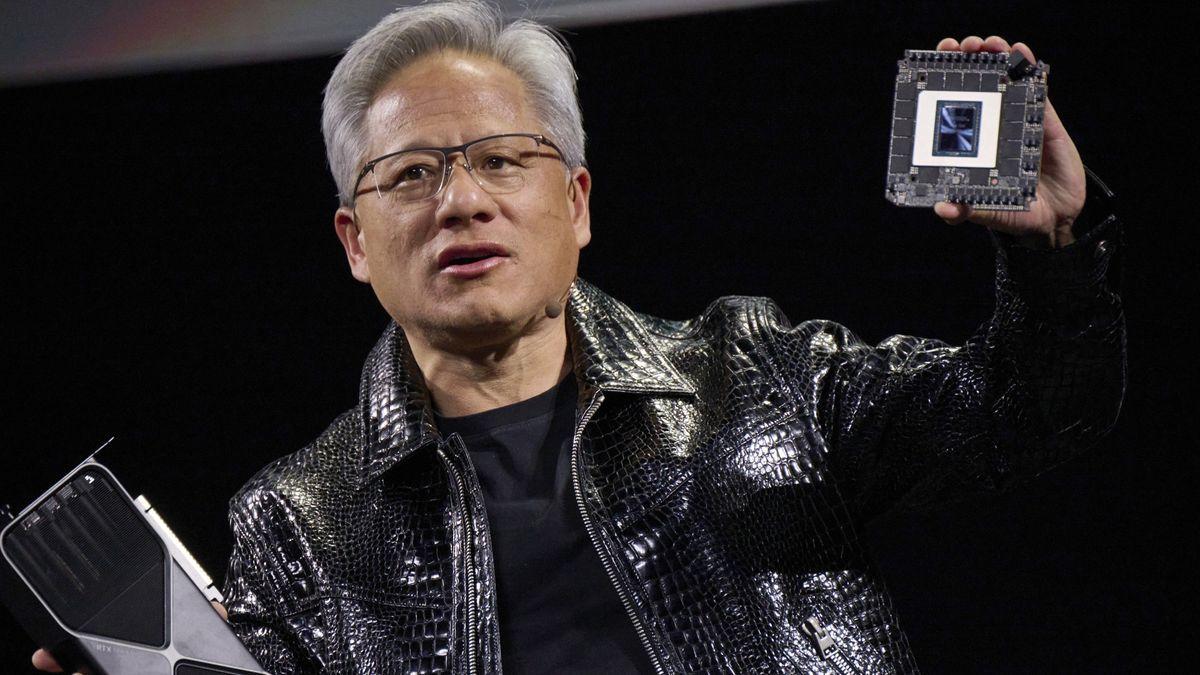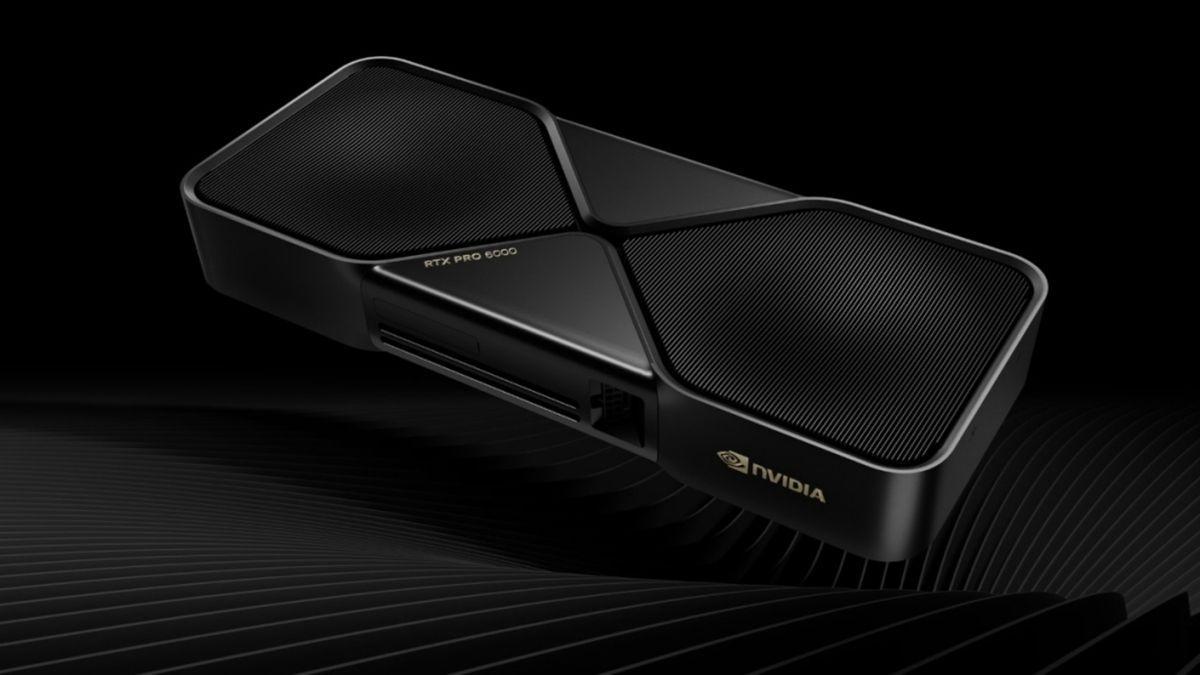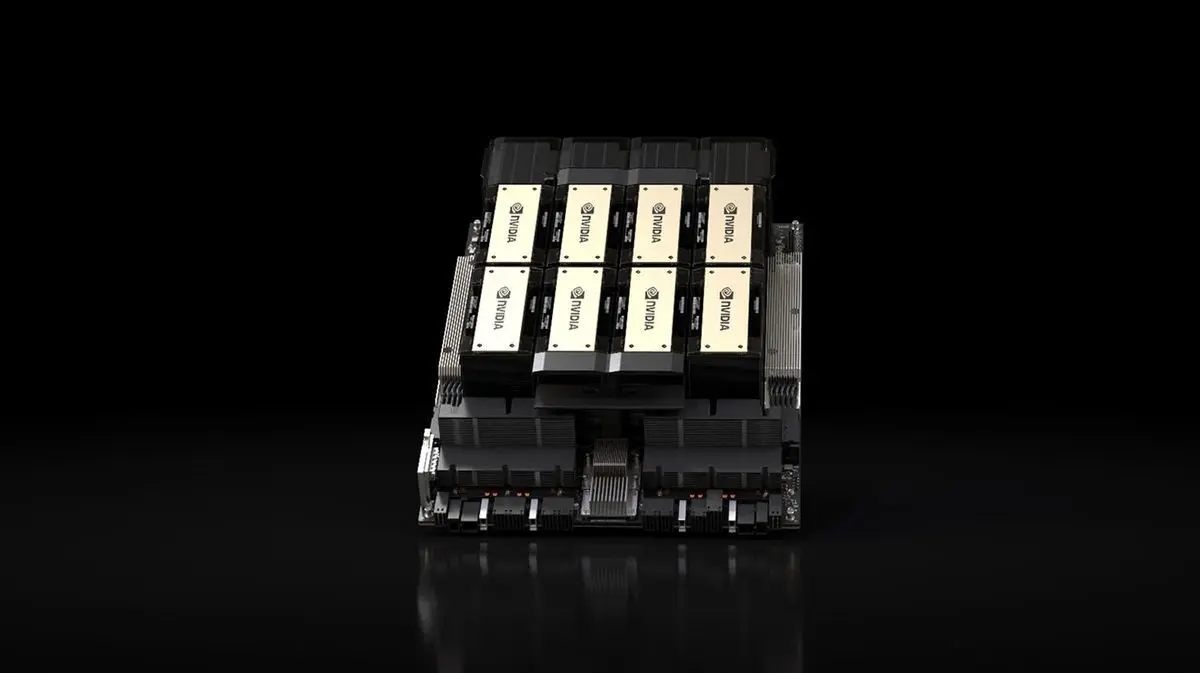China's GPU Advancements Spark Concerns for Nvidia's Market Dominance
5 Sources
5 Sources
[1]
China's first 6nm domestic GPU with purported RTX 4060-like performance has powered on
Lisuan Technology, a Chinese graphics card startup, has announced via the company's official WeChat account that its forthcoming G100 graphics card has successfully powered on, marking a significant milestone in its deployment. The G100 purports to be China's first domestic 6nm graphics card. As China embarked on its journey towards technological independence, a wave of industry veterans joined the gold rush. Founded in 2021, Lisuan Technology is among the youngest startups in the graphics card sector, alongside Moore Threads (2020) and Biren (2019). Lisuan Technology has considerable backing, as it was reportedly established by industry veterans boasting more than 25 years of experience in Silicon Valley. The same can be said for Moore Threads, which was founded by Zhang Jianzhong, the former vice-president and general manager of Nvidia China. Little information is available regarding the G100, besides its use of Lisuan Technology's proprietary TrueGPU architecture. In contrast to some Chinese firms that license intellectual property (IP) from sources like Imagination, TrueGPU asserts that it is an in-house architecture developed from the ground up. Lisuan Technology previously stated that the G100 is created using a 6nm process node but did not reveal the manufacturer. Due to U.S. export restrictions, China cannot access the 6nm node, ruling out Samsung and TSMC as options. As a result, it is likely that the Chinese foundry SMIC is responsible for producing the silicon using its 6nm manufacturing process, which is also implemented for Huawei's latest Ascend 920 AI chip. With limited information, we can only rely on rumors regarding the specifications of G100. For example, it is claimed that the G100 provides performance similar to the GeForce RTX 4060. This claim generates significant skepticism, as the GeForce RTX 4060, despite being a last-generation product, is still regarded as one of the best graphics cards available; we have yet to see a Chinese-made graphics card rival it. Additionally, the G100 is rumored to feature ample memory and modest power consumption. The G100 reportedly supports popular APIs such as DirectX 12, Vulkan 1.3, OpenGL 4.6, and OpenGL 3.0, suggesting that G100 could be a decent gaming graphics card. Work on the G100 started in 2021, with Lisuan Technology originally aiming for a 2023 launch. However, financial difficulties obstructed these plans, and by 2024, the company neared bankruptcy. To support the struggling startup, Dongxin Semiconductor, its parent company, provided a substantial financial boost of $27.7 million, enabling continued development of the G100. Lisuan Technology has successfully obtained the first G100 chips from the foundry, and they are operational. The outcomes seem to meet the startup's expectations. As a result, the company has moved forward with software and hardware validation as well as driver optimization. Clearly, the G100 has considerable progress ahead before reaching the retail market. It is reportedly in the tape-out phase and is currently undergoing risk trial production. Completing a 6nm tape-out requires substantial time and investment, indicating that Lisuan Technology is at a pivotal point in G100's development. Lisuan Technology intends to deliver small quantities of G100 in the third quarter of this year. Nonetheless, given the timeline, mass production likely won't happen until 2026. Targeting the performance of the GeForce RTX 4060 isn't bad; however, the G100 needs to function as a reliable graphics card right from the start. It's unreasonable to expect Lisuan Technology's first attempt to compete with the likes of Nvidia, AMD, or even Intel. Creating a good graphics card from scratch demands considerable time and effort. Moore Threads has demonstrated that the software aspect is just as crucial as the hardware, given that new driver updates can significantly boost performance. We might see the first benchmarks for the G100 before the end of the year.
[2]
China can't get Nvidia's best GPU, but what they can get might be more dangerous in numbers
Export rules slow performance, but they can't stop parallelized AI scaling by Chinese CSPs In response to US export restrictions introduced in April 2025, Nvidia is reportedly preparing a special edition of its RTX Pro 6000 GPU for the Chinese market. A report from TrendForce claims this new version will switch from high-bandwidth memory (HBM) to the slower but more accessible GDDR7. The switch will allow the chip to comply with new regulations that prohibit GPUs with HBM-level memory bandwidth or advanced interconnect capabilities, resulting in a scaled-down GPU, but not one lacking power. The RTX Pro 6000 is a potent chip. Even after being watered down, TrendForce estimates its performance will fall between Nvidia's older L40S and the L20 China edition. This places the chip well within the range of GPUs capable of meaningful AI workloads. What's driving interest is not just availability, but capability, even with the downgrade. Critics have pointed out that a cut-down version of a very powerful card is still extremely capable, especially if it's priced more affordably. As a result, Chinese cloud service providers (CSPs) are expected to scale horizontally, buying more units and optimizing for larger node deployments. Yes, this approach will be more expensive and consume more power, but that's just a numbers game - CSPs will need to increase infrastructure investment and manage higher power demands. The downside, of course, is that such workarounds are inherently inefficient. Nonetheless, if the price per unit is right, the aggregate performance could still meet, or even exceed, current needs. It may not be the fastest setup in traditional terms, but in parallelized environments, the performance gap could narrow. That said, Chinese chipmakers like Huawei and Cambricon are working to fill the gap left by restricted access to top-tier Nvidia GPUs. If the special edition RTX Pro 6000 succeeds, it might delay the domestic adoption of homegrown alternatives. If it fails, it could accelerate them. Nvidia's strategy may help it navigate current U.S. restrictions, but it remains an open question whether that will be enough in the long run. A weaker chip could still be one of the fastest GPUs on the market, and too powerful to ignore, especially when the line between compliance and capability is so finely drawn.
[3]
Nvidia's Jen-Hsun Huang says Chinese competitors are 'quite formidable' just days after the announcement of a Chinese RTX 4060-level GPU powering up
US export controls have increasingly stopped GPUs with certain AI capabilities from getting into China, and just this week, Nvidia stated the US's ban of H20 chips into the country meant a 'multibillion-dollar write-off' for the tech company. Though these protectionist policies from the US are not keeping China from building its own GPUs, as a new China-made GPU has powered up. Lisuan Technology, a Chinese startup, has been developing the "first self-developed architecture and fully independent intellectual property GPU chip", and it turned on this week. This was announced in a recent WeChat post, alongside additional guarantees to "carry out detailed and comprehensive software and hardware testing and driver optimization work." According to Tom's Hardware, the 6 nm GPU chip is targeting RTX 4060-level performance, and is currently titled the G100. Lisuan has reportedly been working on the G100 since 2023, with plans to launch it in 2023, so there is a level of skepticism around whether or not it can actually hit that RTX 4060 performance level. Despite being a budget card from the last generation, the RTX 4060 is still an impressive card, built on the 5 nm process from TSMC. The smaller the process, the higher the density of transistors, and this results in better performance and efficiency. Effectively, it's harder (and sometimes impossible) to get the same performance out of older processes. The G100 powering on is a good sign for the card, but it's the first of many steps before it can actually see a launch into the Chinese market. Further optimising and just plain testing is needed, especially as it's targeting "the needs of desktops, notebooks, graphic workstations and other devices." Huang tells Bloomberg, "The Chinese competitors have evolved" and Huawei, with its new AI chips, has become "quite formidable." Given that the domestic ability to create processes for the G100 is quite limited, it is likely that Huawei's Ascend 920 and Lisuan's G100 are using silicon from the same Chinese foundry: SMIC. This is all according to estimations from Tom's Hardware. According to Huang, "Like everybody else, they [Chinese companies] are doubling, quadrupling capabilities every year." This is all to build towards a central point that Huang wants "all of the world's AI researchers and all of the world's developers to be building on American stacks". This is reportedly "irrespective of the near-term revenue success that we have", though opening up sales to a bigger market surely can't hurt the hardware giant.
[4]
Nvidia's research boss claims the company's Chinese AI researchers are now writing programs for Huawei instead and is blaming the US chip exports
Nvidia's been banging the drum against the United State's China chip export restrictions for a while now, but while it had previously highlighted this in broad terms, the company now seems to be getting more direct with its claims. According to a machine translation of a report from Taiwan Economic Daily (via Wccftech), Nvidia's chief scientist and senior VP of research, Bill Dally, claims that Huawei is scooping up ex-Nvidia AI researchers as a result of the restrictions. According to Dally, admittedly via a machine translation, the growth in the number of AI researchers working in China -- apparently growing from a third of the world's researchers in 2019 to almost half of them today -- has been forced by the US export restrictions. The idea is that without these restrictions, Huawei wouldn't be forced to lean so strongly into home-grown AI solutions, but now it must do so to keep up. Nvidia is clearly keen on presenting this argument (probably in hopes that the US administration specifically will hear it) to show that there are arguable downsides of banning its exports to China for the US. It certainly appeals to the ears of those concerned about the US-China technological arms race. As I said, though, the general argument isn't new -- Nvidia has been touting it for a while. At Computex last month, Nvidia CEO Jensen Huang said: "AI researchers are still doing AI research in China" and "if they don't have enough Nvidia, they will use their own [chips]." And regarding Huawei specifically, Huang said the company has become "quite formidable". There is, of course, another reason other than US national interest that might make Nvidia keen to highlight possible negatives of export controls. Namely, the fact that these restrictions have cost and will cost the company lots of money. Nvidia itself has confirmed this, stating that after billions of dollars lost through restrictions of its H20 chips to China in Q1, it's expecting another $8 billion to be lost for the same reason in Q2. That's because Hopper, the company's previous chip architecture, "is no longer an option", according to the CEO. Huawei's latest Ascend 910 and 920 chips, courtesy of China's SMIC (Semiconductor Manufacturing International Corporation), will probably now be better options for Chinese AI companies than trying to get hands on Nvidia silicon somehow. And with ex-Nvidia researchers now apparently padding out the Chinese industry, who knows what will be cooked up next and when. Nvidia certainly seems to be presenting itself as worried about what's to come. The company can't complain about the vaguely 'poachy' aspect of this, though, really -- not when Nvidia seems to be enticing likely TSMC employees in Taiwan with high salary job advertisements. Sometimes business is just business, you know?
[5]
Jensen Huang on edge: After DeepSeek, Chinese chipmakers may threaten Nvidia's dominance
Nvidia CEO Jensen Huang is showing signs of concern as a new wave of Chinese chipmakers have speeded up their development, following the debut of DeepSeek's large language model, another Chinese startup is building a new GPU that could match its performance to Nvidia, as per a report. According to a PC Gamer report, Lisuan Technology, a Chinese startup, has been working to develop the "first self-developed architecture and fully independent intellectual property GPU chip", which would "carry out detailed and comprehensive software and hardware testing and driver optimization work." The 6 nm GPU chip, currently titled the "G100", is being built with the aim to match RTX 4060-level performance, which is built on the 5 nm process from TSMC, reported Tom's Hardware. While Lisuan has reportedly been trying to develop the G100 since 2023 and had planned to launch it in 2023, this has led to scepticism if the company can actually reach the RTX 4060 performance level, as per the report. ALSO READ: Tesla gets a big shoutout from Jensen Huang, says this Elon Musk product is the next trillion-dollar industry According to a PC Gamer report, the G100 will be the first of many steps before it can actually release it into the Chinese market. While, it also needs more optimisation and just plain testing because it is targeting "the needs of desktops, notebooks, graphic workstations and other devices," as per the report. Meanwhile, the Nvidia CEO told Bloomberg during an interview that "the Chinese competitors have evolved and Huawei, with its new AI chips, has become quite formidable," as quoted in the report. As the domestic ability to create processes for the G100 is very limited, so it is possible that Huawei's Ascend 920 and Lisuan's G100 use silicon from the same Chinese foundry, which is SMIC, as per estimations from Tom's Hardware, reported PC Gamer. Huang said, "Like everybody else, they [Chinese companies] are doubling, quadrupling capabilities every year," adding, "all of the world's AI researchers and all of the world's developers to be building on American stacks," quoted PC Gamer. Why is Nvidia's CEO concerned? Because Chinese companies are moving fast and could compete directly with Nvidia, even as US export restrictions try to limit that. Is the G100 available now? No, it's still in early testing. It needs more work before it can launch in China's consumer or business markets.
Share
Share
Copy Link
Chinese startups like Lisuan Technology are developing domestic GPUs that could potentially rival Nvidia's performance, while Nvidia's CEO expresses concerns about evolving Chinese competitors in the face of US export restrictions.
China's Domestic GPU Development Gains Momentum
In a significant development for China's semiconductor industry, Lisuan Technology, a Chinese graphics card startup, has successfully powered on its G100 GPU. This marks a crucial milestone in China's pursuit of technological independence, particularly in the face of US export restrictions on advanced AI chips
1
.The G100: China's Answer to High-Performance GPUs

Source: Tom's Hardware
The G100, purportedly China's first domestic 6nm graphics card, is built on Lisuan Technology's proprietary TrueGPU architecture. While detailed specifications are scarce, rumors suggest that the G100 aims to provide performance comparable to Nvidia's GeForce RTX 4060
1
. This ambitious target has raised eyebrows in the tech community, given the RTX 4060's standing as one of the best graphics cards available.Challenges and Progress
Lisuan Technology, founded in 2021, faced financial difficulties that nearly led to bankruptcy. However, a substantial financial boost of $27.7 million from its parent company, Dongxin Semiconductor, has enabled the continued development of the G100
1
. The company is now moving forward with software and hardware validation, as well as driver optimization.Nvidia's Response and Market Implications

Source: PC Gamer
Nvidia, a dominant player in the GPU market, is closely watching these developments. CEO Jensen Huang has acknowledged that "Chinese competitors have evolved" and become "quite formidable"
3
. This recognition comes as Nvidia faces challenges due to US export restrictions, which have resulted in significant financial losses for the company4
.US Export Restrictions and Their Impact

Source: TechRadar
The US government's export controls have prevented GPUs with certain AI capabilities from entering China. In response, Nvidia is reportedly preparing a special edition of its RTX Pro 6000 GPU for the Chinese market, switching from high-bandwidth memory (HBM) to the slower but more accessible GDDR7
2
. This move aims to comply with new regulations while still providing a capable GPU for AI workloads.Related Stories
The Rise of Chinese AI Research and Development
Bill Dally, Nvidia's chief scientist and senior VP of research, claims that the export restrictions have led to a significant increase in AI researchers working in China. He suggests that companies like Huawei are now attracting ex-Nvidia AI researchers, potentially accelerating China's domestic AI chip development
4
.Future Outlook
As Chinese companies like Lisuan Technology and Huawei continue to advance their GPU and AI chip capabilities, the global semiconductor landscape is poised for significant changes. While Nvidia remains a leader in the field, the rapid progress of Chinese competitors, coupled with ongoing geopolitical tensions and export restrictions, may reshape the industry in the coming years
5
.References
Summarized by
Navi
[1]
[2]
Related Stories
Nvidia CEO Urges AI Export Rule Revision Amid Global Competition and China's AI Advancements
01 May 2025•Technology

China Urges Shift to Domestic AI Chips, Challenging NVIDIA's Dominance
08 Oct 2024•Technology

US-China Chip War Intensifies: Nvidia Caught in the Crossfire
10 Oct 2025•Policy and Regulation

Recent Highlights
1
Google launches Gemini 3 Flash as default AI model, delivering speed with Pro-grade reasoning
Technology

2
OpenAI launches GPT Image 1.5 as AI image generator war with Google intensifies
Technology

3
OpenAI launches ChatGPT app store, opening doors for third-party developers to build AI-powered apps
Technology





